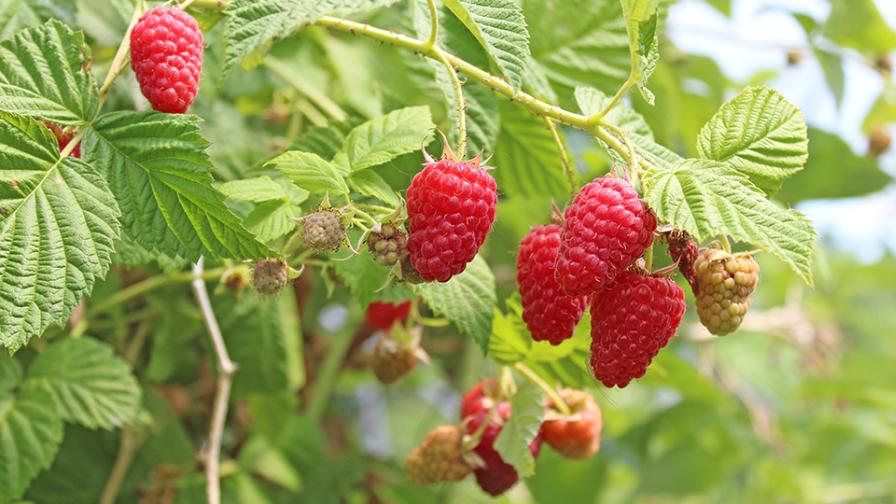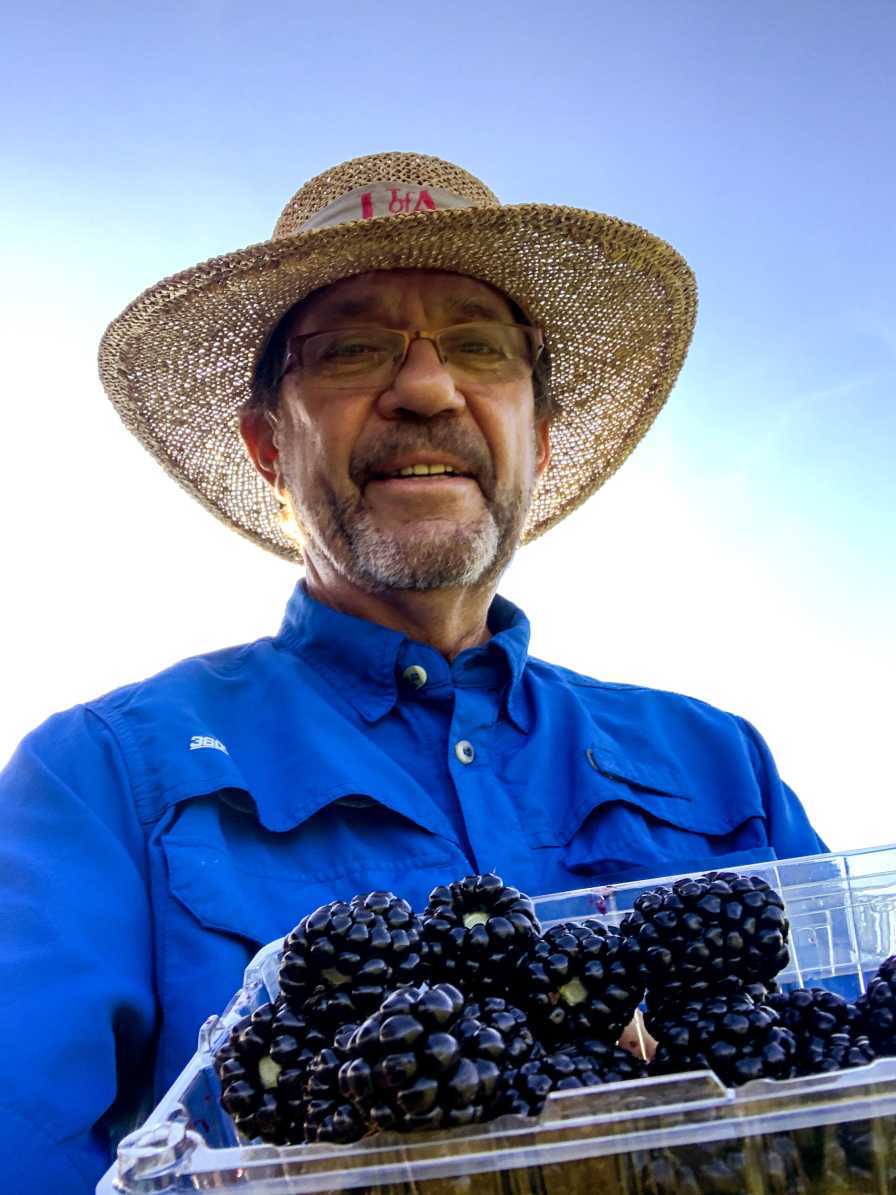Cheers to This Outstanding Red Raspberry Breeding Program

These red raspberries are part of Dr. Courtney Weber’s red raspberry breeding program at Cornell University.
Photo by Courtney Weber, School of Integrative Plant Science-Horticulture
I attended the International Rubus and Ribes Symposium recently held in Portland, OR. There was a tremendous amount of information provided by experts from around the world on Rubus plants, which is the genus of plant that includes raspberry and blackberry.
One of the highlights of the symposium was a presentation by Dr. Courtney Weber, who has led the caneberry breeding effort at Cornell for many years. He shared some of the history of the program plus new developments on the way. I was profoundly struck by the rich history of the Cornell red raspberry breeding program and want to share some of what I learned.
As many of you know, the history of breeding at the New York Agricultural Experiment Station/Cornell based in Geneva, NY, runs very deep. Fruit breeding began there in the late 1880s, and the first red raspberry varieties were released in 1908. One of the most important events in breeding was the hiring of Dr. George Slate as the caneberry breeder in 1920, where he led the program until 1969.
We are all in a much better place due to Dr. Slate’s contributions! He released 41 small fruit varieties. Among the most important of these was ‘Heritage’ red raspberry in 1969. This was truly a breakthrough variety, the first important primocane-fruiting caneberry variety ever developed.
It is important to recognize that almost all the fresh raspberries we see on our grocery store shelves today are from primocane-fruiting varieties, and ‘Heritage’ played a very important role in all the subsequent varieties that followed.
It took a while for growers to adopt this new type of plant, but by the 1990s it was reported that ‘Heritage’ was the most widely grown primocane cultivar worldwide — and a mainstay of the Chilean industry — as well as many other production areas in the world.
The contribution of ‘Heritage’ as a parent in many breeding programs is one of the most dynamic stories in caneberry breeding. We continue to gain from Dr. Slate’s efforts. Later primocane-fruiting releases from the program included ‘Prelude’ and ‘Encore’ in 1999.
WEBER JOINS THE PROGRAM
Weber took the reins of the breeding program in 1999. He has continued the strong tradition of small fruit breeding at Cornell, including the red raspberry program. His ‘Crimson’ series (C. Giant, C. Night, and C. Treasure) of primocane-fruiting varieties is widely grown throughout the Midwest and Northeastern U.S. Since 2005, he has grown more than 54,000 seedlings, made 514 selections, and released five varieties. His strong commitment to traditional breeding is valued, as well as his mentoring of graduate students who continue the breeding tradition.
Weber introduced the utilization of DNA and molecular technologies — including genetic marker/map development and marker-assisted selection — of parent material for resistance to Phytophthora root rot. He has also introduced other new technologies for elucidation of the genetic control of resistance to root rot, and genome-wide association studies in search of the allele conferring prickle-free canes. He is one of the leaders in using new molecular tools in caneberry breeding parallel to traditional breeding approaches.
His program has also utilized tissue culture and virus testing to ensure that clean plants are introduced into the commercial marketplace when a new variety is released. Rather than depending on thermo (heat) therapy for virus elimination, he developed chemotherapy to eliminate viral infections. His program developed a procedure in red raspberry to incorporate ribavirin into the multiplication stage of in vitro culture to produce virus-free adventitious shoots. This procedure can be completed in a fraction of the time needed for thermotherapy and apical meristem isolation.
Although focused on breeding and genetics, Weber also has a substantial Extension appointment, which keeps him in close contact with grower needs. He carries this awareness to other areas of investigation including research in both perennial and substrate production in red raspberry.
The Cornell Rubus breeding program installed its first set of high tunnels in 2008 to begin incorporating this technology into the breeding program. He has verified that some varieties work well in tunnel production, while others exhibit excess vigor, as well as increased powdery mildew occurrence, in the tunnel environment.
Finally, the program has had substantial success with other caneberries, releasing 34 floricane-fruiting cultivars of red, black, and purple raspberries, and three floricane-fruiting blackberry varieties (‘Darrow’ the most important) in addition to eight primocane-fruiting red raspberries.
This is a heritage to celebrate for all the past accomplishments and for future achievements!
Let the berry good times roll!










